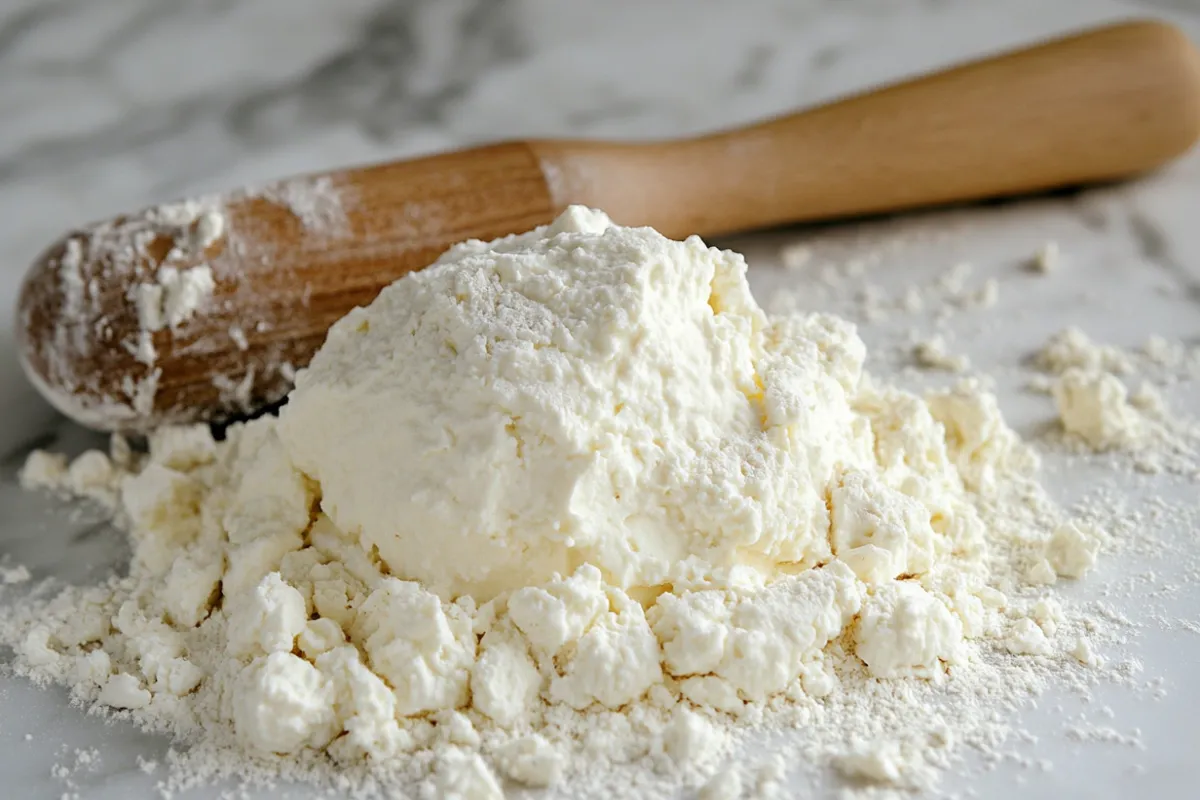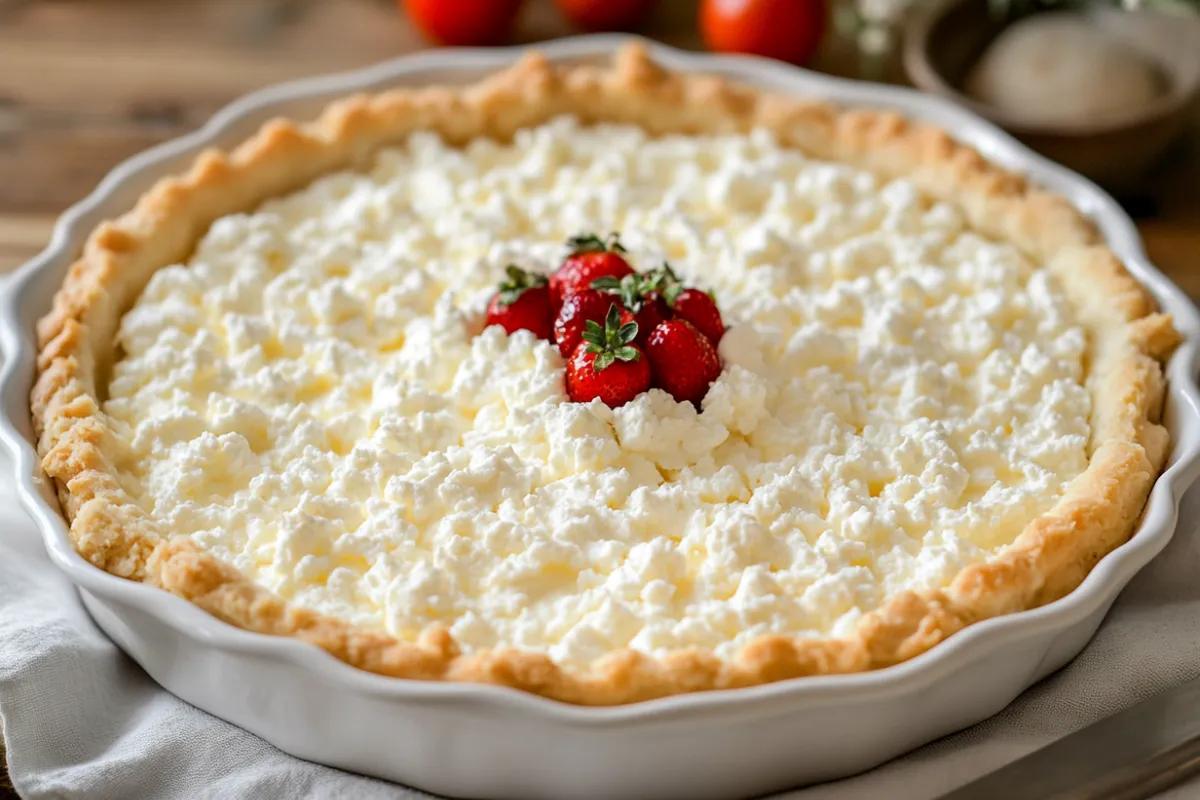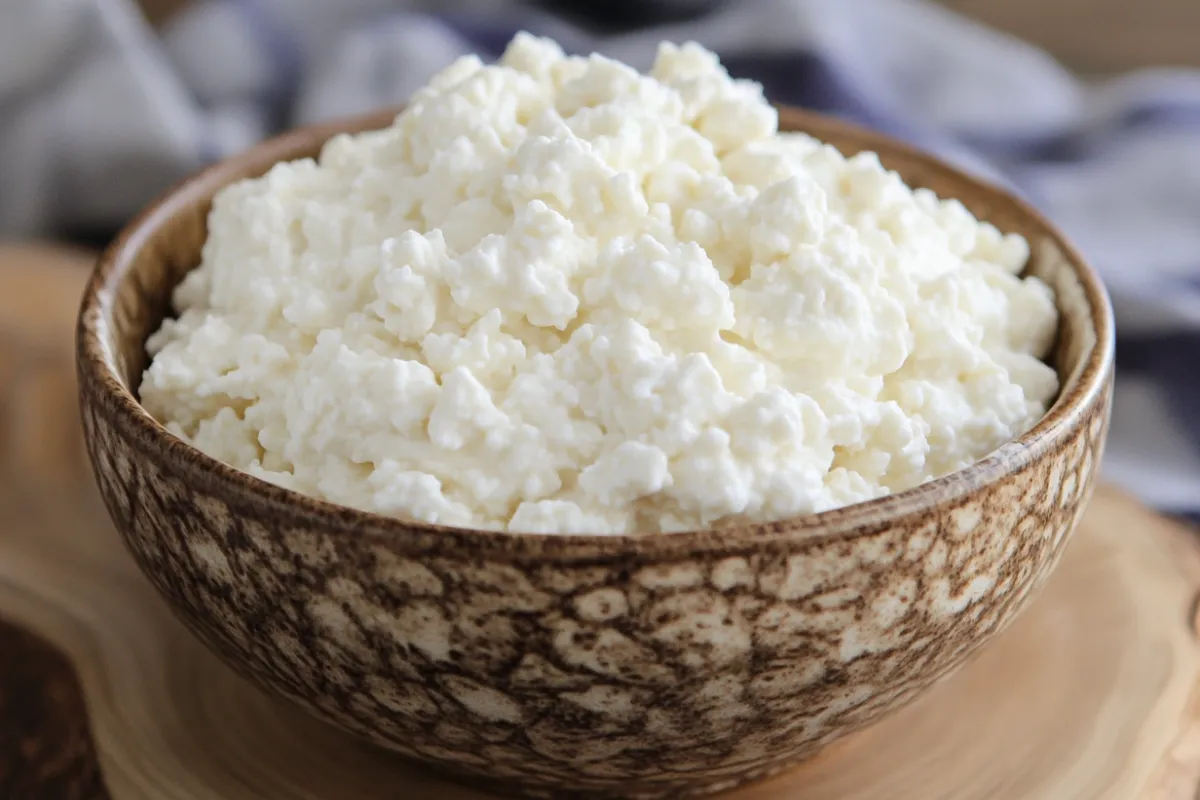Introduction to Cottage Cheese in Baking
Are you curious about why do you use cottage cheese in baking? This humble ingredient is often overlooked in favor of more traditional baking staples, but it packs a powerful punch when it comes to enhancing the texture, taste, and nutritional value of your baked goods. With its impressive protein content, cottage cheese serves as a fantastic substitute or complement in recipes for cakes, breads, and even savory pies.

Its unique composition not only contributes moisture and richness but also helps to create lighter, fluffier textures, making your baked treats both delicious and satisfying. In this article, we’ll explore the myriad ways cottage cheese can transform your baking game, revealing how this versatile ingredient can elevate your culinary creations. So, let’s dive in and discover the secrets behind using cottage cheese in your kitchen!
Cottage cheese is a light dairy product with a slightly lumpy texture and a tangy flavor. It’s similar to cream cheese but lighter and offers a good balance of fat and protein. This makes it an attractive option for those looking to enhance the flavor and nutritional value of their baked goods while also experimenting with new textures.
In baking, cottage cheese can be used as a substitute for cream cheese, sour cream, ricotta, and even some portions of butter. It works well in a variety of baked goods, from cakes and bread to cookies. Adding cottage cheese enhances fluffiness and moisture in the finished products.
Blending Cottage Cheese for Smooth Texture is a hack that can help achieve the desired smoothness when incorporating cottage cheese into batter. Whether you’re making cakes, cookies, or pancakes, this step ensures a well-emulsified texture without noticeable lumps.
Key Takeaways
- Cottage cheese adds moisture and a creamy texture to baked goods.
- It provides a protein boost, making baked goods more nutritious.
- Cottage cheese can be used as a low-fat substitute for butter or oil in baking.
- Baking with cottage cheese enhances the flavor of your baked goods.
- Cottage cheese is a versatile ingredient that can be used in both sweet and savory baked dishes.
Cottage cheese has become an increasingly popular ingredient in the world of baking, and for good reason. Why do you use cottage cheese in baking? The answer lies in its unique properties that not only enhance flavor but also improve texture and nutritional value. Unlike traditional substitutes such as butter or oil, cottage cheese adds a moisture-rich, creamy element that infuses baked goods with a delightful, subtle tang, elevating dishes from ordinary to extraordinary.
One of the key takeaways from incorporating cottage cheese into your baking repertoire is its versatility. This ingredient can seamlessly transition from sweet treats, like cakes and muffins, to savory options such as casseroles and bread. Its mild flavor profile allows it to blend beautifully without overpowering the other ingredients. By using cottage cheese, bakers can create lighter versions of their favorite recipes while still achieving desirable richness and depth.
Furthermore, baking with cottage cheese can be a fantastic way to include additional protein in your diet. This makes it especially appealing for health-conscious individuals looking to maintain a balanced intake of nutrients. The creamy texture of cottage cheese also means that it can serve as a fruitful alternative to butter or oil, allowing bakers to experiment with healthier options in a myriad of delicious ways. Whether you’re trying to trim calories or simply looking for a new baking challenge, cottage cheese offers a creative and nutritious avenue worth exploring.
What is Cottage Cheese?
Cottage cheese is a versatile dairy product that’s popular in baking with cottage cheese. It’s made by curdling milk and draining the whey. This gives it a soft, creamy texture and a unique flavor. It’s great for many baked goods.
Nutritional Profile of Cottage Cheese
Cottage cheese is packed with protein, making it a nutritional powerhouse. It also has calcium, phosphorus, and other important vitamins and minerals. This makes it a top choice for low-fat baking with cottage cheese that’s still high in protein.
Types of Cottage Cheese for Baking
- Low-fat cottage cheese: This variety has less fat, making it ideal for low-fat baking with cottage cheese.
- Full-fat cottage cheese: It has a richer, creamier texture, perfect for baking with cottage cheese when you want something more indulgent.
- Small-curd cottage cheese: Its smaller curds blend well into baked goods, offering a smooth texture.
Every type of cottage cheese has its own benefits. It’s a fantastic ingredient for adding a protein boost from cottage cheese to various baked goods, from sweet to savory.
How to Use Cottage Cheese in Different Baked Goods
Cakes
- Cottage cheese adds moisture and texture to cakes, giving them a rich yet light crumb.
- It’s a great substitute for cream cheese in cake recipes and can be blended with other ingredients to achieve a smooth texture.
Bread
- Adding cottage cheese to bread results in a soft and fluffy texture. You can even try this cottage cheese bread recipe to see how it enhances bread’s flavor and structure.
- It’s particularly useful in quick breads, where it can replace yogurt or buttermilk for a tangier flavor.
Cookies
- Using cottage cheese in cookies can result in a soft and tender crumb.
- It pairs well with ingredients like chocolate chips, raisins, or oats for a hearty, flavorful cookie.
Moisture and Texture Benefits of Cottage Cheese in Baking
Baking with cottage cheese brings big benefits. It adds moisture and improves texture in baked goods. Cottage cheese is full of water, which keeps baked items from drying out.
Its creamy texture is great for cottage cheese in baked goods. It makes gluten tender, leading to a soft crumb. This makes baked goods more enjoyable to eat.
The benefits of cottage cheese in baking go beyond just moisture and texture. It also adds richness and a tangy flavor. This enhances the taste of many different flavors.
“Cottage cheese is a versatile ingredient that can transform the texture and mouthfeel of baked goods, making them more moist, tender, and indulgent.”
Using cottage cheese in baking can make your creations better. It makes them more moist, tender, and delicious. This is great for both home cooks and professional bakers.
Why do you use cottage cheese in baking?
Protein Boost from Cottage Cheese
Cottage cheese is packed with protein, making it great for bakers who want to make their treats healthier. It adds a lot of protein to baked goods, making them more filling and satisfying. This is especially good for items like muffins, pancakes, and scones.
The protein in cottage cheese is key for baking. It acts as a natural binder, creating a tender yet sturdy texture. Adding cottage cheese to your recipes means you get a protein boost without losing the taste or moistness of your baked goods.
- Cottage cheese is an excellent source of high-quality protein, with one cup containing around 28 grams of protein.
- The protein in cottage cheese can help improve the structure and texture of baked goods, leading to a more satisfying and filling end product.
- Incorporating cottage cheese into baking recipes is a great way to increase the protein content without altering the taste or appearance of the final baked item.
Using cottage cheese in baking also brings other benefits. It adds a creamy texture and a subtle tangy flavor. This makes it perfect for a wide range of sweet and savory baked goods. Whether you’re making muffins, pancakes, or scones, cottage cheese is a versatile ingredient that can help you create delicious, protein-packed treats.

Low-Fat Alternative in Baked Goods
Cottage cheese is a great low-fat choice for baking. It replaces high-fat ingredients like butter, oil, or cream. This way, bakers can make healthier versions of their favorite treats without losing flavor or texture.
Cottage Cheese as a Butter or Oil Substitute
Cottage cheese is creamy and smooth, making it perfect for replacing butter or oil. It’s high in protein and low in fat. This keeps baked goods moist and rich, while cutting down on fat and calories.
This makes cottage cheese ideal for those who want to enjoy tasty treats without the guilt.
- Cottage cheese can replace up to 75% of the butter or oil in a recipe, cutting down fat significantly.
- Its protein helps ingredients stick together, making baked goods tender and moist.
- Baked goods with cottage cheese have a tangy, fresh taste. This flavor goes well with both sweet and savory flavors.
Using low-fat baking with cottage cheese in your recipes offers many benefits. You can enjoy benefits of cottage cheese in baked goods. Plus, you get to indulge in cottage cheese in baked goods that are healthier and easier on your figure.
Baking with Cottage Cheese: Tips and Tricks
When baking with cottage cheese, a few key techniques are important. Knowing how cottage cheese works with other ingredients helps. This ensures your baked goods have the right texture and taste.
Getting the cottage cheese ready is key. It’s best to puree or blend it before adding it to your recipe. This makes the cheese smooth and even in the mix.
The moisture level of cottage cheese is also crucial. It can be high in moisture. So, you might need to adjust the liquid in your recipe. Start with a small amount of cottage cheese and add more as needed, watching the mix’s consistency.
Think about how cottage cheese will mix with other ingredients. It adds a creamy, tangy flavor to baked goods. This makes it great with fruits, nuts, and savory spices. Try different combinations to find the best taste.
By using these tips and tricks for baking with cottage cheese, you can make tasty, moist, and flavorful baked goods.
Benefits of Cottage Cheese in Baked Goods
Cottage cheese makes baked goods better in many ways. It adds moisture and improves texture. It also brings a unique flavor that goes well with many ingredients.
This includes fruits, nuts, herbs, and spices. Cottage cheese can make baked treats taste more complex and interesting.
Flavor Enhancement with Cottage Cheese
Cottage cheese’s flavor can make baked goods taste better. Its tangy taste balances sweetness. The creamy texture blends well with other flavors.
This is great for desserts with tart fruits like lemon or berries. It’s also good in savory items like quiches or pies.
The mild taste of cottage cheese works well with spices and herbs. This makes it a great choice for bakers who want to create complex flavors.
“Cottage cheese’s subtle tang and creaminess can really enhance the overall flavor profile of baked goods, complementing a variety of other ingredients in delicious and unexpected ways.”
Using cottage cheese in baking can make a big difference. It’s not just about making things moist and tender. It’s about creating a truly satisfying taste experience.
Versatility of Cottage Cheese in Baking Recipes
Cottage cheese is a versatile ingredient that can make many baked goods better. It’s great for making cakes, scones, and quiches. It adds texture and flavor to your baked items.
Using cottage cheese in baking adds moisture and richness. Its creamy texture makes cakes and breads feel luxurious. Its mild taste lets it mix well with other ingredients.
Cottage cheese also adds nutrition to your baked goods. It’s a good source of protein. This makes your baked treats more filling and satisfying, perfect for health-conscious bakers.
You can make sweet treats like muffins and scones or savory dishes like quiches and tarts with cottage cheese. It’s great for adding moisture, protein, or creaminess to your baking. Cottage cheese is a valuable tool for any baker.
Using cottage cheese in your baking opens up a world of tasty possibilities. You can make unique and satisfying treats that will wow your family and friends.
Cottage Cheese in Savory Baked Dishes
Cottage cheese is not just for sweet treats. It’s also great in savory baked goods. Its creamy texture and mild taste make it perfect for pies, tarts, and quiches. It adds moisture, protein, and a special texture to these dishes.
Cottage Cheese in Savory Pies and Tarts
Cottage cheese can be a filling or topping in savory pies and tarts. It’s a tasty and healthy choice instead of traditional fillings. It goes well with veggies, meats, and herbs, making it great for spinach and feta tarts, chicken pot pies, and quiches.
Using different types of cottage cheese, like low-fat or small-curd, can change the texture and taste of your savory baked goods. Adding cottage cheese to savory baked dishes boosts nutrition and adds a creamy richness that’s sure to please.
“Cottage cheese is a game-changer in savory baking. Its subtle flavor and creamy texture complement a wide range of ingredients, making it an excellent choice for creating delicious and wholesome savory pies and tarts.”
Looking to add protein to your quiche or a creamy touch to your pot pie? Baking with cottage cheese in savory dishes is a simple way to make your baking better. It also makes your family meals more nutritious and satisfying.

Substituting Cottage Cheese for Other Ingredients
Cottage cheese is a versatile ingredient for baking. It can replace higher-fat ingredients like cream cheese, sour cream, and butter or oil. This swap cuts down on calories and fat, adding protein to baked goods.
Using cottage cheese in baking lets bakers enjoy creamy textures and flavors without guilt. Its soft, creamy nature makes it a great substitute for higher-fat ingredients. This makes it perfect for low-fat baking with cottage cheese.
Cottage cheese also boosts the flavor of baked goods. Its mild, tangy taste works well with many recipes. It’s a great choice for why do you use cottage cheese in baking? It’s reliable and nutritious in pies, cakes, and savory dishes.
Why do you use cottage cheese in baking? One primary reason is that it helps to create a moist crumb in cakes and muffins. The moisture content in cottage cheese contributes to a tender texture, which is essential for achieving the perfect bake. Additionally, when blended into batters, cottage cheese breaks down, leading to a smoother consistency, similar to what you would get with a traditional creamy ingredient. This makes it particularly suited for recipes like pancakes, waffles, and even bread, where a light and airy outcome is desired.
Moreover, cottage cheese works exceptionally well in savory dishes too. It can be a fantastic substitute for ricotta in lasagna or stuffed pasta dishes, offering a similar creaminess while being lower in calories. Its ability to absorb flavors makes it a wonderful addition to dips, spreads, and casseroles. By adding cottage cheese to your savory recipes, you can enhance the nutritional value while keeping the richness intact.
FAQ
Why do you use cottage cheese in baking?
Cottage cheese is great for baking because it’s versatile. It can be used in cakes, breads, pies, and muffins. It’s good for health-conscious bakers because it adds moisture, boosts protein, and is low in fat.
What is Cottage Cheese?
Cottage cheese is a soft, creamy dairy product. It’s made by curdling milk and draining the whey. It’s packed with protein, calcium, and other nutrients. There are different types, like low-fat and full-fat, each with its own benefits for baking.
What are the Moisture and Texture Benefits of Cottage Cheese in Baking?
Cottage cheese adds moisture and a creamy texture to baked goods. It prevents dryness and makes items like cakes and muffins more tender. Its high water content also tenderizes gluten, creating a delicate crumb.
How does Cottage Cheese Provide a Protein Boost in Baking?
Cottage cheese is a protein powerhouse. It’s great for bakers who want to make their treats more nutritious. The protein in cottage cheese strengthens baked items, making them more satisfying and filling.
How can Cottage Cheese be used as a Low-Fat Alternative in Baked Goods?
Cottage cheese is a low-fat substitute for butter, oil, or cream. It lets bakers make healthier versions of their favorite recipes. This way, they can enjoy tasty treats without the extra fat and calories.
What are some Tips and Tricks for Baking with Cottage Cheese?
To bake with cottage cheese, you need to know a few tricks. Consider its texture and moisture. Also, blend or puree it well to mix it smoothly into your batter or dough.
How can Cottage Cheese Enhance the Flavor of Baked Goods?
Cottage cheese can also improve the taste of baked goods. Its tangy flavor and creaminess complement many ingredients. Used right, it adds depth and complexity to your baked treats.
How Versatile is Cottage Cheese in Baking Recipes?
Cottage cheese is incredibly versatile. It can be used in sweet and savory baked goods, from cakes to savory pies. Its versatility makes it a valuable addition to any baker’s pantry.
How can Cottage Cheese be used in Savory Baked Dishes?
Cottage cheese is not just for sweet treats. It’s also great in savory dishes. Its creamy texture and mild flavor are perfect for savory pies, tarts, and quiches, adding moisture and protein.
How can Cottage Cheese be Substituted for Other Ingredients in Baking?
Cottage cheese can replace cream cheese, sour cream, and even butter or oil in baking. This swap makes baked goods healthier without losing flavor or texture. It’s a great choice for those looking to make nutritious treats.
Conclusion
Incorporating cottage cheese in baking is an excellent way to add nutrition, flavor, and unique texture to a variety of baked goods. Whether you’re making cakes, cookies, or bread, cottage cheese provides a versatile alternative to more traditional dairy products, with added benefits like reduced fat and increased protein. For more insights on how cottage cheese behaves in baking, check out Does cottage cheese melt during baking? for detailed information.
For anyone looking to experiment in the kitchen, cottage cheese is a textural and flavorful upgrade that is definitely worth trying. From rich cheesecakes to fluffy pancakes, cottage cheese can help elevate your baking to new levels of deliciousness.
When substituting cottage cheese for cream cheese, the process is quite simple. Blend the cottage cheese until smooth to achieve a cream cheese-like consistency before incorporating it into your mixtures. This substitution works particularly well in desserts like cheesecakes or frostings, providing a light yet rich creaminess that can enhance rather than detract from the dish’s overall profile. Similarly, using cottage cheese instead of sour cream in recipes like muffins or pancakes yields a delightful tang while boosting nutritional value.
Another benefit of integrating cottage cheese into your baking repertoire is its ability to replace oil or butter without sacrificing taste or moisture. This swap can be particularly gratifying in recipes for loaf cakes or brownies, where you want a dense, moist texture but also wish to make a healthier choice. By cutting down on saturated fats, you can create baked goods that retain their indulgent appeal while being more suitable for various dietary preferences.

